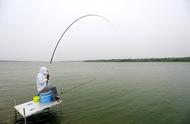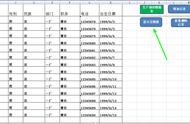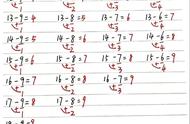动词形式及变化
英语中的动词共有五种形式,分别是动词原形、动词的第三人称单数形式、动词的现在分词形式、动词的过去式形式和动词的过去分词形式。
一、动词原形
就是动词的基本形式,词典和单词表上出现的大部分动词都是以原形出现的,如:
give, go, draw, sing ,come…等
二、动词的第三人称单数形式
就是在动词原形后面 s/es。
1、动词第三人称单数形式的规则变化
(1)一般情况下,直接在动词后加“s”
例如 : like–likes,read–reads,stop–stops ,play–plays
(2)以“辅音字母 y”结尾的动词,变 y 为 i 再加 “es”
例如 : fly–flies,study–studies,carry–carries,worry–worries
(3)以“o、s、x、ch、sh”结尾的动词,在其后加“es ”
例如 : teach–teaches,wash–washes,watch–watches,brush–brushes,do–does,go–goes
2、动词第三人称单数形式的不规则变化,如 :
have–has,is为 be 动词的第三人称单数形式。
3、用法
动词的第三人称单数主要有以下用法
(1)一般现在时态的肯定句中,用于he 、she 、it 、单个的人名、地名、物名之后,如:
She/Lily often goes to school by bike.
(2)单数可数名词、不可数名词或“ this/ that/ the 单数可数名词”做主语时,如:
The cat climbs tree very quickly.
The book is youes. 这本书是你的。
The milk is in the glass. 牛奶在玻璃杯里。
(3)不定代词 someone、somebody、nobody、everything、something 等及指示代词 this、that 做主语时,后面的动词用第三人称单数形式,如:
Everyone is here. 大家都到齐了。
This/That is a pen. 这是/那是一支钢笔。
三、动词的现在分词形式
1、动词的现在分词形式变法规则
(1)一般情况下,直接在动词后加“ing”,如 :
go–going do–doing,play–playing,climb–climbing,listen–listening,watch–watching,speak–speaking,sleep–sleeping
(2)以不发音的 e 结尾的动词,去 e 再加 “ing”,如 :
write–writing ,ride–riding,like–liking,skate–skating,make–making,come–coming,smile–smiling ,take–taking
(3)末尾以“辅音 元音 辅音”构成的重读闭音节,双写最后的辅音字母再加“ing”,如 :
swim–swimming,sit–sitting,run–running put–putting,shop–shopping,skip–skipping,get–getting, cut–cutting
(4)以 ie 结尾的动词,变 ie 为 y ,再加“ing”,如 :
tie–tying ( 系,打结 ),die–dying ( 死 ),lie–lying ( 撒谎,躺 )
2、用法
动词的现在分词形式主要用于
(1)进行时态中,如:
Lucy is reading books now. 露西现在正在读书。(现在进行时态)
I was reading at 8:00 this morning.今天早上八点的时候我正在读书。(过去进行时态)
I will be reading at 8:00 tomorrow morning.我将在明天早上八点的时候读书。(将来进行时态)
(2)用于一些单词或短语之后,如:
enjoy、practice、finish、have fun、have a good time 之后
He enjoy playing football. 他喜欢踢足球。
四、动词的过去式形式
1、动词的过去式形式的变法规则
(1)一般情况下,直接在动词后加“ed”,如 :
talk–talked, ask–asked,play–played,clean–cleaned,watch–watched,ask–asked,work–worked,want–wanted
(2)以不发音的 e 结尾的动词,直接在词尾加“d”,如 :
dance–danced, like–liked,move–moved,live–lived,taste–tasted,love–loved,hope–hoped,use–used
(3)以“辅音字母 y ”结尾的动词,变 y 为 i ,再加“ed”,如 :
study–studied,carry–carried,hurry–hurried,cry–cried,marry–married,copy–copied,worry–worried ,try–tried
(4)以一个元音字母和一个辅音字母结尾的重读闭音节动词,双写最后的辅音字母再加“ed”,如 :
stop–stopped,plan–planned,trip–tripped
2、动词过去式形式的
不规则变化,如 :
am/is–was, are–were,do–did ,go–went,see–saw, say–said,give–gave, get–got,come–came, have–had,eat–ate,take–took,run–ran,sing–sang,put–put,make–made,read–read ,write–wrote,draw–drew, drink–drank,fly–flew, ride–rode,speak–spoke ,swim–swam,sit–sat ,sweep–swept,know–knew ,grow–grew,think–thought,teach–taught,buy–bought,bring–brought,catch–caught,drive–drove,forget–forgot, tell–told,understand–understood, stand–stood ,can–could ,will–would
,build–built, leave–left
meet–met,mean–meant
,learn–learned/learnt等
3、用法
动词的过去式形式主要用于一般过去时态中,如:
He was a student three years ago. 他三年前是一名学生。
五、动词的过去分词形式
1、动词的过去分词形式的变化规则
(1)、大多数动词直接在其后加 “ed”,如:
finish –finished,look–looked
(2)以不发音的“e”结尾的单词之后加“ed”,如:
change–changed,live–lived
(3)以“辅音字母 y”结尾的动词,变y为i再加“ed”,如:
carry–carried,study–studied
(4)以一个元音字母和一个辅音字母结尾的动词,双写最后的一个辅音字母,再加“ed ”,如:
stop–stopped,drop–dropped
2、动词过去分词形式的不规则变化,如:
come–come, hurt–hurt
,hold–held, win–won
,lend–lent ,build–built
,catch–caught,keep–kept,forget–forgotten ,tell–told,be–been,have–had,fall–fallen,fly–flown,draw–drawn ,see–seen
3、用法
动词的过去分词形式主要用于完成时态、被动语态,如:
l have already read this book many times.这本书我已经读了几遍了。(现在完成时态)
After he had finished his homework,he went to bed. 他昨天睡觉之前作业就完成了。(过去完成时态)
Our classroom is cleaned very clean everyday. 我们班的教室每天都被打扫得非常干净。(被动语态)
2023.03.31

















